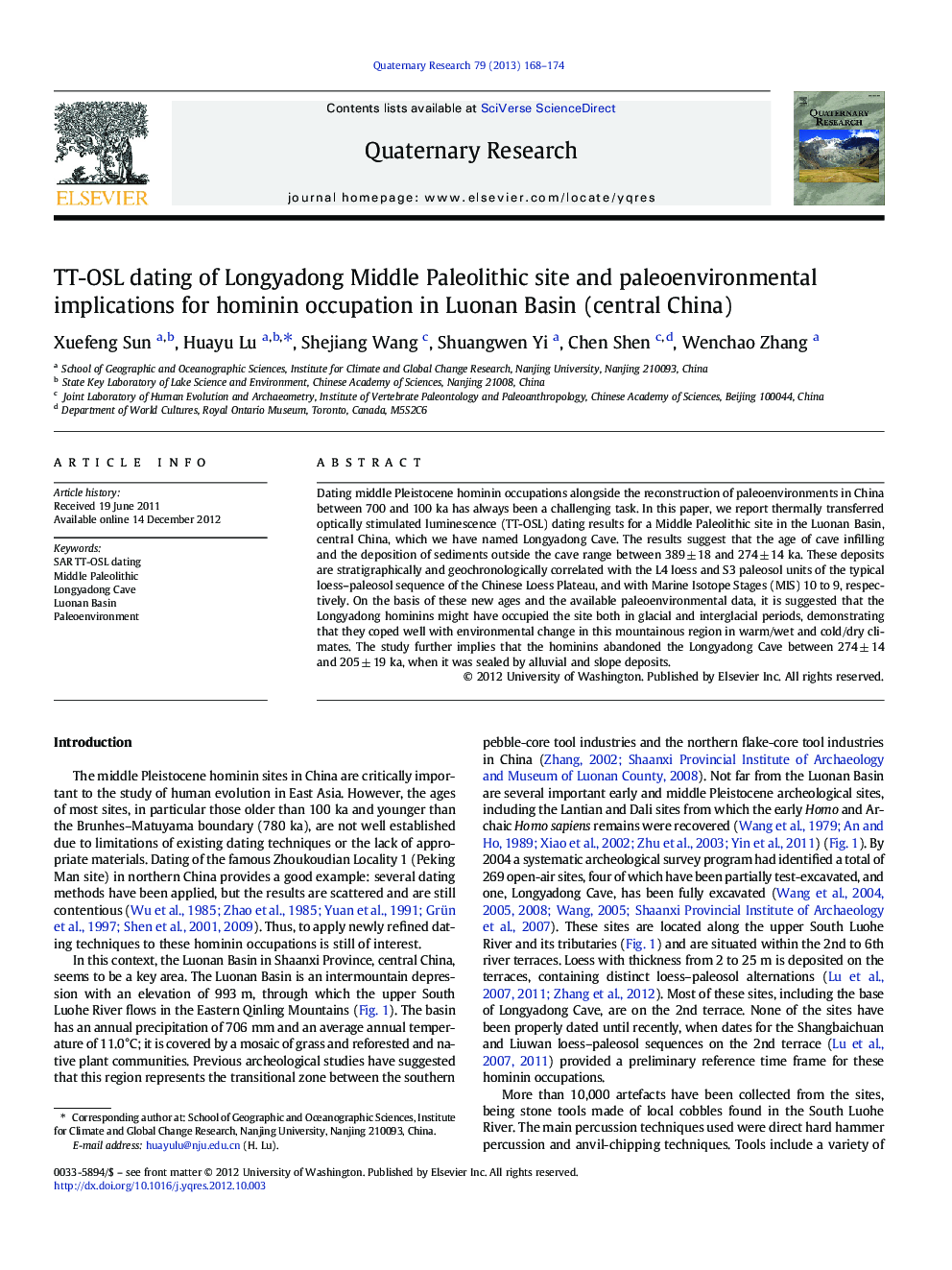| Article ID | Journal | Published Year | Pages | File Type |
|---|---|---|---|---|
| 1045482 | Quaternary Research | 2013 | 7 Pages |
Dating middle Pleistocene hominin occupations alongside the reconstruction of paleoenvironments in China between 700 and 100 ka has always been a challenging task. In this paper, we report thermally transferred optically stimulated luminescence (TT-OSL) dating results for a Middle Paleolithic site in the Luonan Basin, central China, which we have named Longyadong Cave. The results suggest that the age of cave infilling and the deposition of sediments outside the cave range between 389 ± 18 and 274 ± 14 ka. These deposits are stratigraphically and geochronologically correlated with the L4 loess and S3 paleosol units of the typical loess–paleosol sequence of the Chinese Loess Plateau, and with Marine Isotope Stages (MIS) 10 to 9, respectively. On the basis of these new ages and the available paleoenvironmental data, it is suggested that the Longyadong hominins might have occupied the site both in glacial and interglacial periods, demonstrating that they coped well with environmental change in this mountainous region in warm/wet and cold/dry climates. The study further implies that the hominins abandoned the Longyadong Cave between 274 ± 14 and 205 ± 19 ka, when it was sealed by alluvial and slope deposits.
